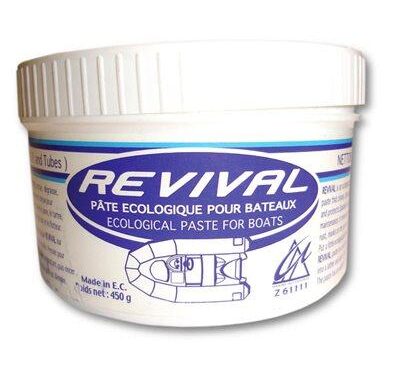Franklin Park, a cherished green space in the heart of Boston, is poised for a major ecological revival. In a comprehensive effort to restore the park’s natural habitats, city planners and environmental groups are diving deep into strategies aimed at enhancing biodiversity, improving water management, and fostering resilient ecosystems. This article explores the detailed plans underway to rejuvenate Franklin Park’s landscapes, highlighting the challenges and opportunities faced as stakeholders work together to ensure the park remains a vibrant sanctuary for both wildlife and visitors alike.
Ecological Restoration Strategies Targeting Franklin Park’s Native Habitats
Efforts to rejuvenate Franklin Park’s native plant communities are centered on meticulously reducing invasive species while promoting the natural growth of indigenous flora. Restoration teams are employing targeted removal techniques such as selective cutting and controlled burns, designed to preserve the soil integrity and native seed banks. Simultaneously, community volunteers are engaged in planting initiatives that revive historically significant plant species, including eastern hemlock, sassafras, and witch hazel, which are crucial for supporting local wildlife habitats.
To ensure sustainable progress, the project utilizes data-driven monitoring systems that track plant health, soil composition, and biodiversity patterns over time. This adaptive management approach allows adjustments based on seasonal and environmental changes. Key components of the strategy include:
- Seasonal planting cycles aligned with natural growth periods.
- Establishing buffer zones to protect sensitive wetland areas.
- Promoting native pollinators through flowering plant diversity.
- Ongoing educational programs fostering community stewardship.
| Restoration Focus | Target Outcome | Timeline |
|---|---|---|
| Invasive species removal | Increase native plant coverage by 40% | 2024-2026 |
| Native tree planting | Restore canopy diversity | 2024-2025 |
| Soil health improvement | Boost microbial activity | Ongoing |
Community Engagement and Volunteer Initiatives Fueling Long-Term Sustainability
The success of Franklin Park’s ecological revival hinges on the concerted efforts of local residents, environmental groups, and volunteers who bring passion and expertise to every project. Volunteer-driven planting days, invasive species removals, and educational workshops foster a strong sense of ownership among community members, ensuring that restoration efforts go beyond temporary fixes. These engagements are carefully coordinated to empower participants with the knowledge and tools necessary to sustain the park’s natural habitats long after official programs conclude.
Key volunteer initiatives include:
- Tree Stewardship Programs that train locals to monitor and care for young saplings.
- Seasonal Clean-up Drives removing trash and promoting native biodiversity.
- Citizen Science Projects that collect data to inform adaptive management strategies.
- Community Seed Sharing events to propagate native plants adapted to Franklin Park’s unique environment.
| Initiative | Volunteer Hours | Impact Area |
|---|---|---|
| Invasive Plant Removal | 350+ | East Meadow |
| Native Tree Planting | 400+ | Woodland Edge |
| Water Quality Monitoring | 150+ | Golf Course Pond |
These grassroots efforts not only directly rejuvenate the park’s ecosystems but also cultivate a resilient community network invested in long-term stewardship. By fostering ongoing volunteer participation and reinforcing ecological literacy, Franklin Park becomes a model for how urban natural spaces can thrive through shared responsibility and inclusive environmental action.
Recommendations for Enhancing Biodiversity and Improving Invasive Species Management
To foster a thriving ecosystem at Franklin Park, local conservation efforts must emphasize the restoration of native plant communities while aggressively managing invasive species that threaten ecological balance. Prioritizing native flora such as milkweed, goldenrod, and native grasses can provide essential habitat for pollinators and other wildlife, helping to rebuild a resilient food web. Engaging community volunteers in hands-on invasive species removal workshops and promoting citizen science initiatives will not only enhance the effectiveness of management practices but also strengthen public investment in long-term environmental stewardship.
- Integrated pest management: Combining mechanical removal, targeted herbicide use, and biological controls to suppress invasive plants effectively without harming native species.
- Habitat connectivity: Creating corridors to link fragmented habitats, facilitating wildlife movement and genetic diversity.
- Regular monitoring: Implementing a systematic schedule to assess biodiversity gains and promptly detect re-invasions.
| Invasive Species | Control Method | Expected Outcome |
|---|---|---|
| Japanese Knotweed | Cutting + targeted herbicide | Suppressed regrowth |
| Oriental Bittersweet | Manual removal | Reduced canopy competition |
| Multiflora Rose | Biocontrol agents | Population decline |
In Retrospect
As Franklin Park moves forward with its ecological revival plans, the coming months will be critical in shaping the future of this cherished green space. With community input and expert guidance at the forefront, the restoration efforts aim not only to enhance biodiversity but also to foster a deeper connection between residents and the natural environment. Stakeholders and park visitors alike will be watching closely as these initiatives take root, hopeful that Franklin Park can once again flourish as a vibrant habitat and recreational resource for generations to come.










